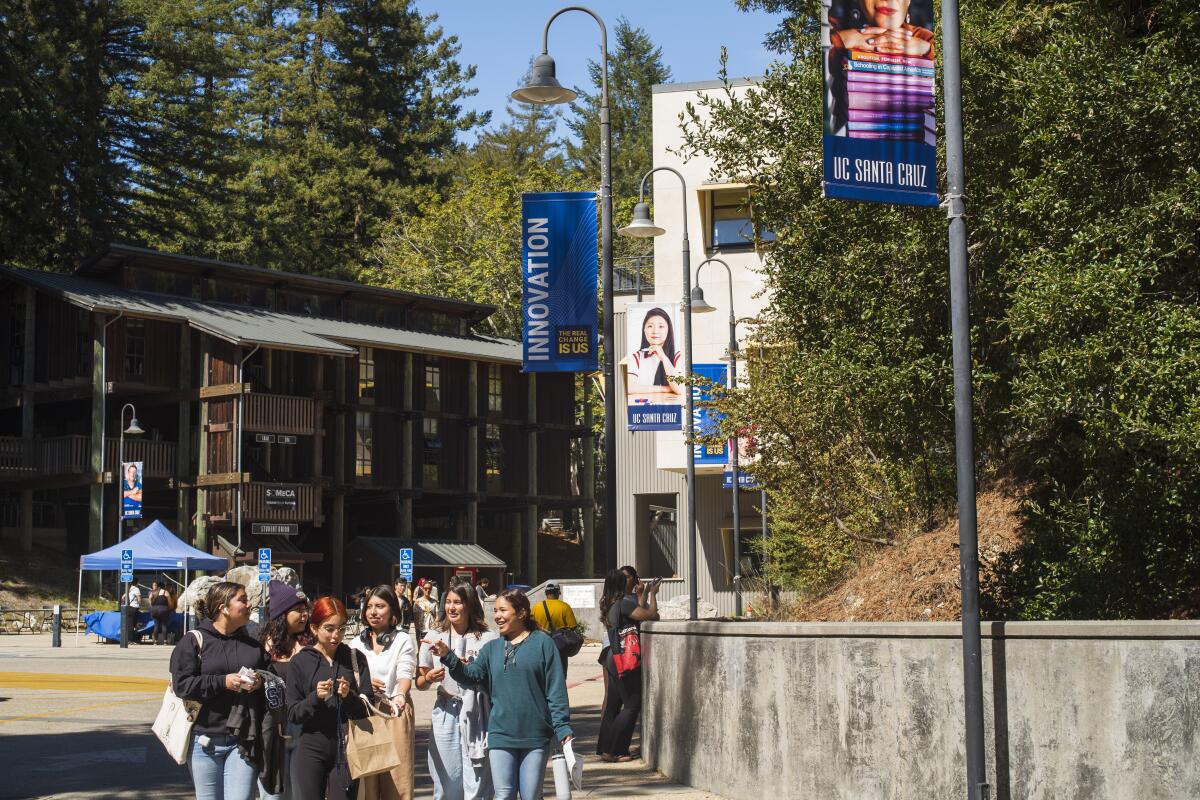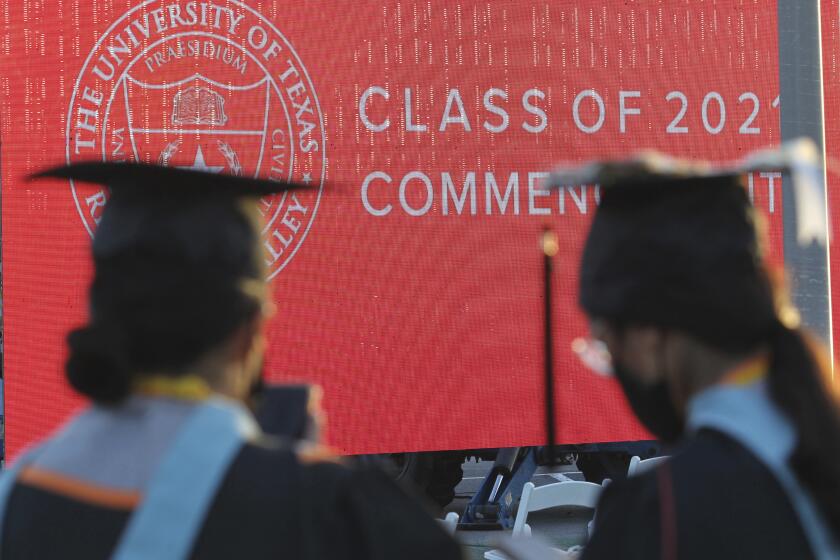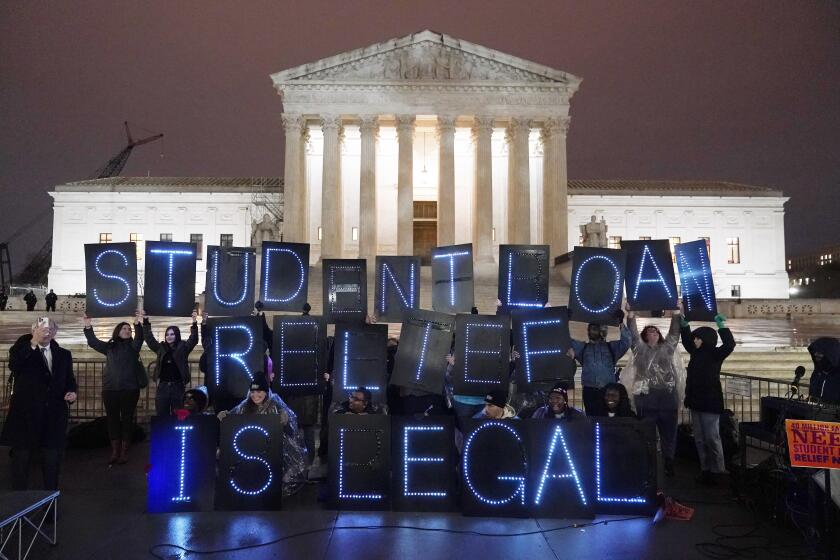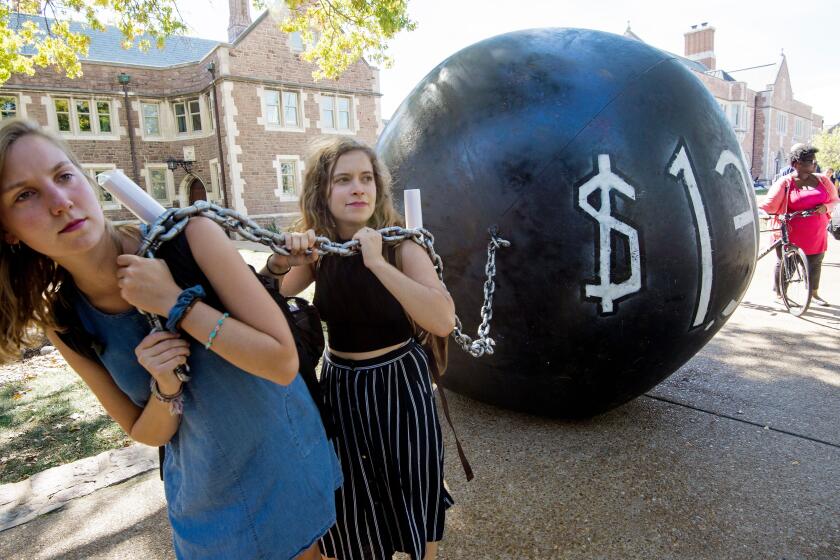Biden administration scales back eligibility for student loan forgiveness. Here’s who’s affected

- Share via
The Biden administration reined in its pledge to forgive up to $20,000 in federal student loans Thursday, narrowing the types of loans eligible for relief.
The basic contours of the offer remain the same. Borrowers with incomes of less than $125,000 (or $250,000 for a couple) can qualify for up to $10,000 in debt forgiveness on their federal direct student loans. The amount of relief rises to $20,000 for borrowers who meet the income limit and received a Pell Grant — a form of aid aimed at the neediest applicants — while an undergraduate.
What has changed is the treatment of loans guaranteed by the federal government but held by private lenders. This includes at least some of the loans issued through the Federal Family Education Loan, Federal Perkins Loan and Health Education Assistance Loan programs.
Initially, the administration said that qualified borrowers with these privately held loans could consolidate them into a federal direct loan and obtain debt relief. On Thursday, however, the department’s website said that to receive relief, borrowers had to have applied for a consolidation loan by Sept. 29.
The Education Department “is assessing whether there are alternative pathways to provide relief to borrowers with federal student loans not held by ED, including FFEL Program loans and Perkins Loans, and is discussing this with private lenders,” the website says.
Some FFEL and Perkins loans are held by the Education Department, so they remain eligible for the blanket forgiveness if the borrowers meet the income limits. But in the case of many older loans, the borrowers may not know if they are federally or privately held because they weren’t given a choice by their college, said Abby Shafroth, director of the student loan borrower assistance project at the National Consumer Law Center.
To find out whether your FFEL or Perkins loans could qualify for forgiveness, go to your account at the Federal Student Aid site (studentaid.gov) and call up the “My Loan Servicers” list. If the servicer’s name is preceded by “DEPT OF ED,” that loan is held by the federal government.
President Biden’s loan forgiveness plan papered over some of the financial aid complexities. Here’s how to figure out if your loan may be eligible.
According to the department’s latest statistics, 10.7 million people have outstanding FFEL and Perkins loans. More than 5 million of those loans are held by the Education Department.
Of the remaining, privately held but federally guaranteed loans, only a portion of the borrowers would meet the income limits for blanket loan forgiveness. One administration source told National Public Radio that roughly 800,000 people would be affected by the change in policy regarding consolidated loans.
The federal government plans to forgive up to $20,000 in student loan debt for millions of Americans. Here’s everything you need to know.
The change was reported on the same day that six Republican-controlled states sued to block the blanket debt forgiveness, arguing that the administration didn’t have the authority to wipe out student loan balances. The lawsuit contends that the relief will hurt the states because they operate or invest in lenders that make student loans.
By cutting off the ability to qualify for forgiveness by consolidating privately held FFELs, Perkins loans and HEALs into a direct loan, the administration is reducing lenders’ and servicing companies’ loss of future earnings. That won’t end the states’ lawsuit, however, or an earlier challenge brought by the Pacific Legal Foundation, which describes itself as a libertarian public interest law firm.
Just say no to anyone offering to help you obtain the $10,000 to $20,000 in student loan debt forgiveness. You don’t need them.
About The Times Utility Journalism Team
This article is from The Times’ Utility Journalism Team. Our mission is to be essential to the lives of Southern Californians by publishing information that solves problems, answers questions and helps with decision making. We serve audiences in and around Los Angeles — including current Times subscribers and diverse communities that haven’t historically had their needs met by our coverage.
How can we be useful to you and your community? Email utility (at) latimes.com or one of our journalists: Jon Healey, Ada Tseng, Jessica Roy and Karen Garcia.
More to Read
Sign up for Essential California
The most important California stories and recommendations in your inbox every morning.
You may occasionally receive promotional content from the Los Angeles Times.
















